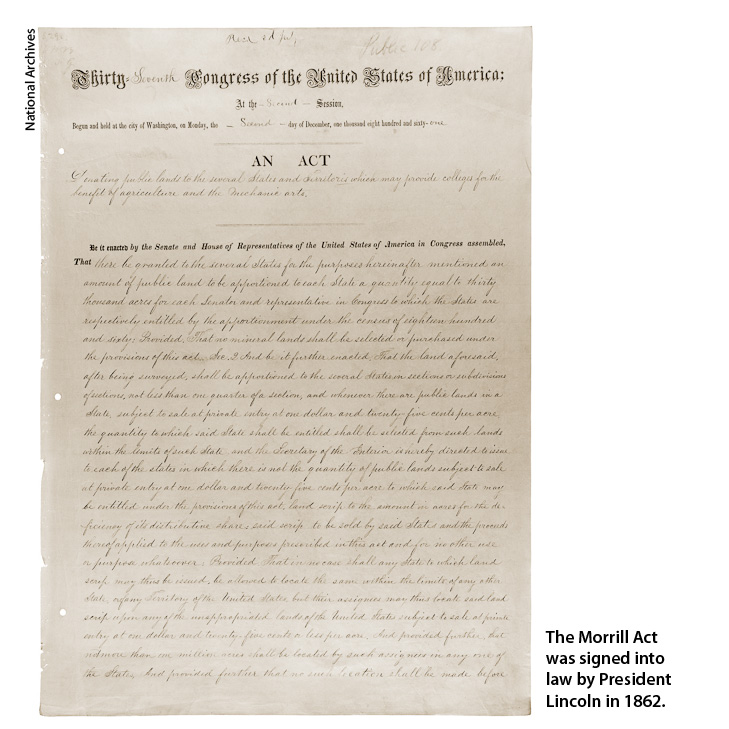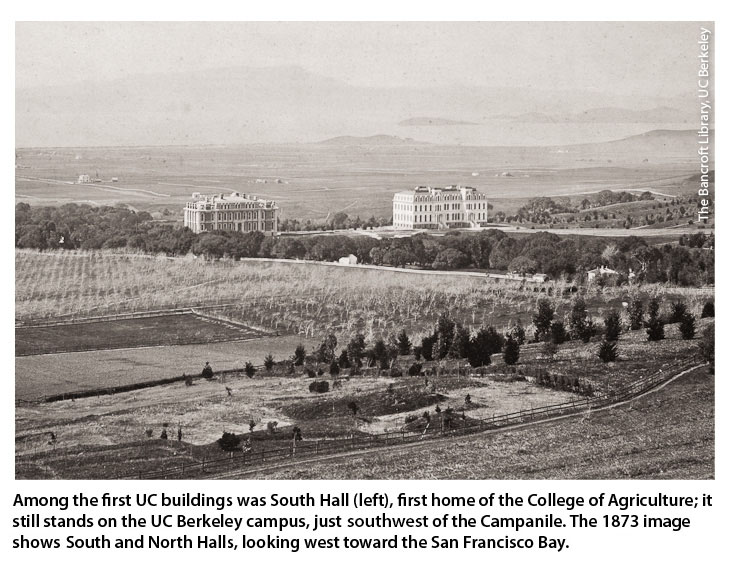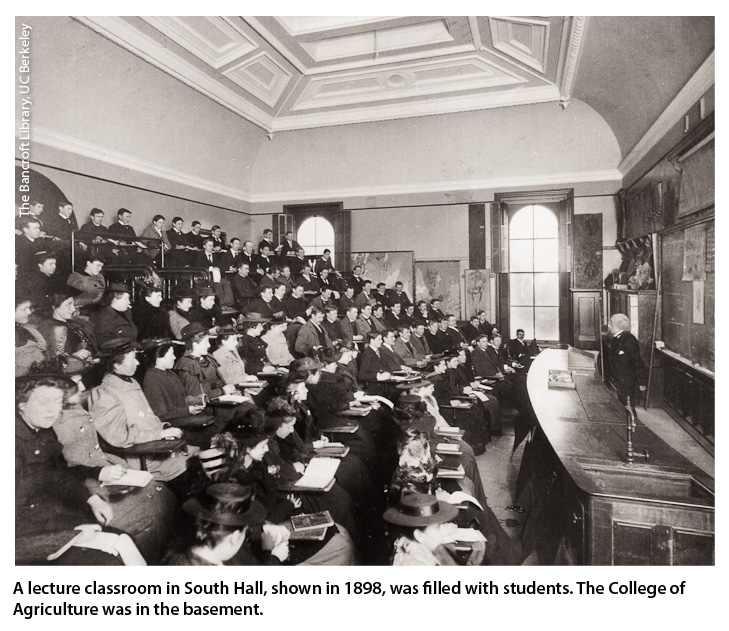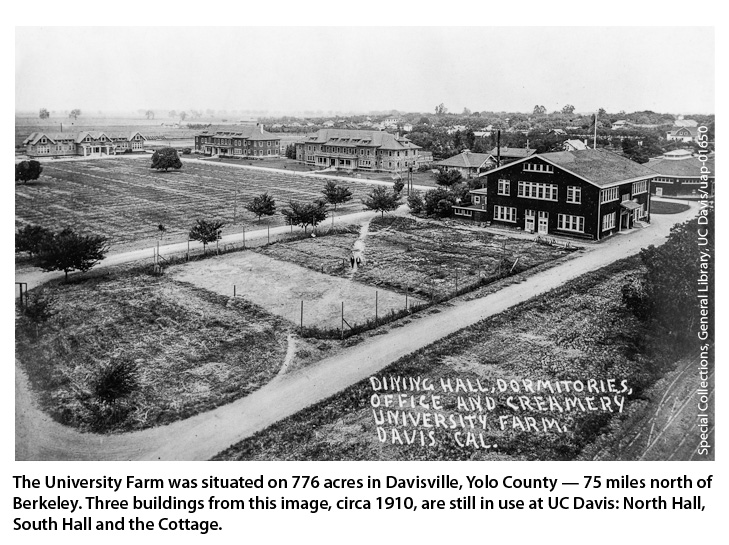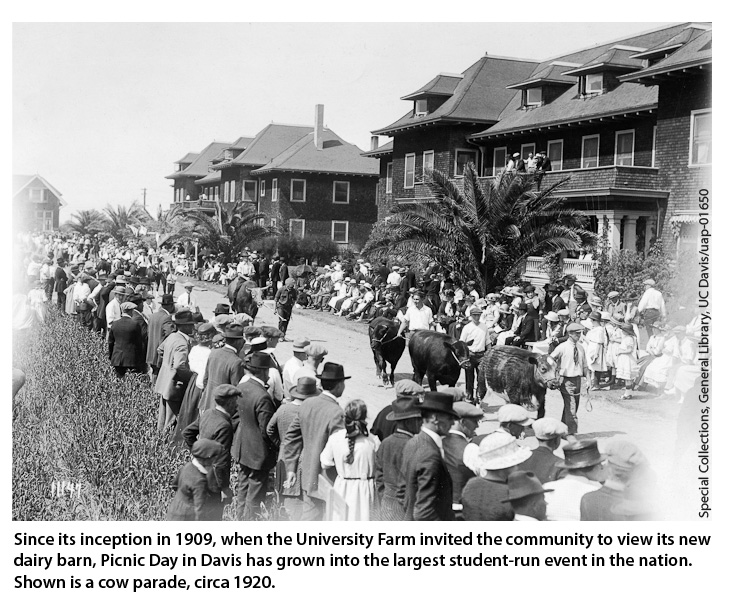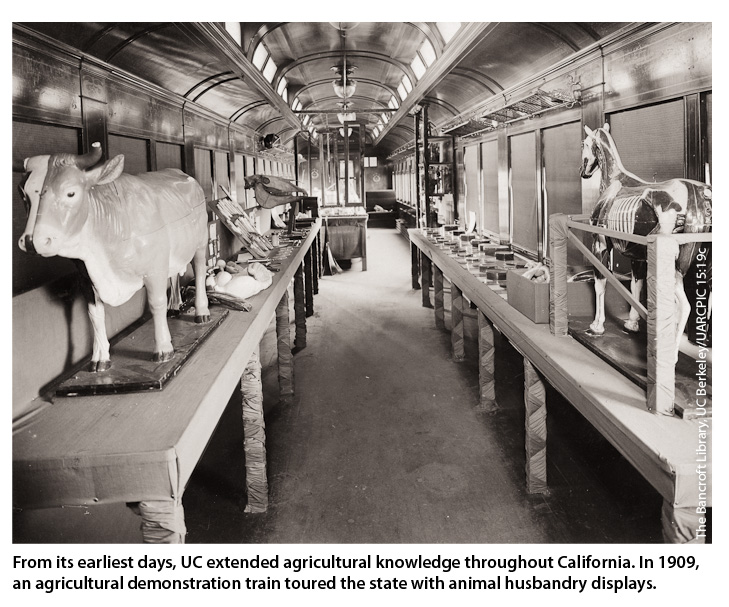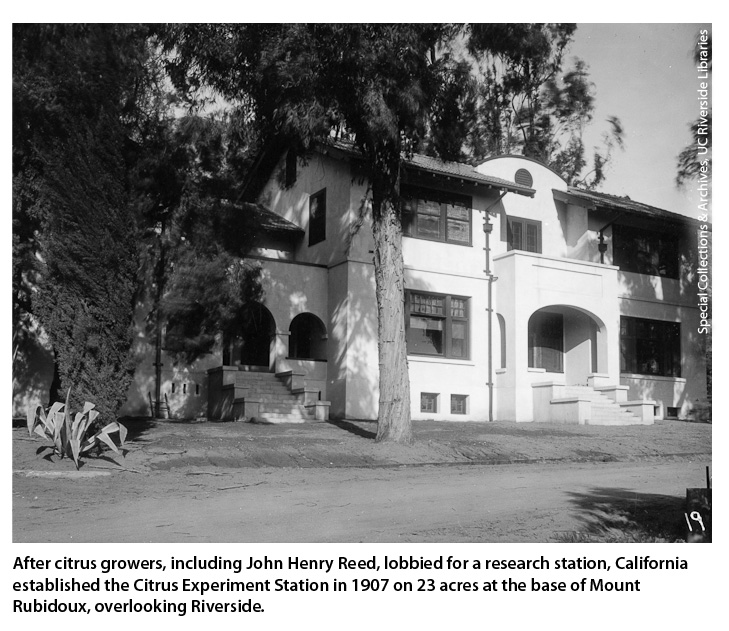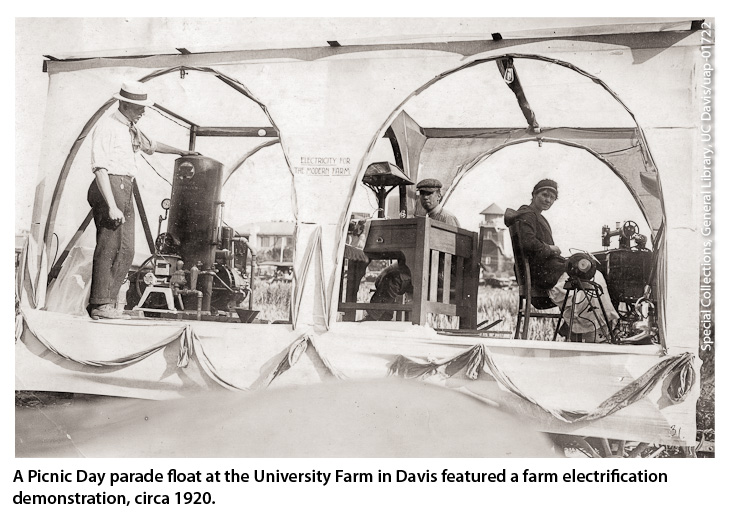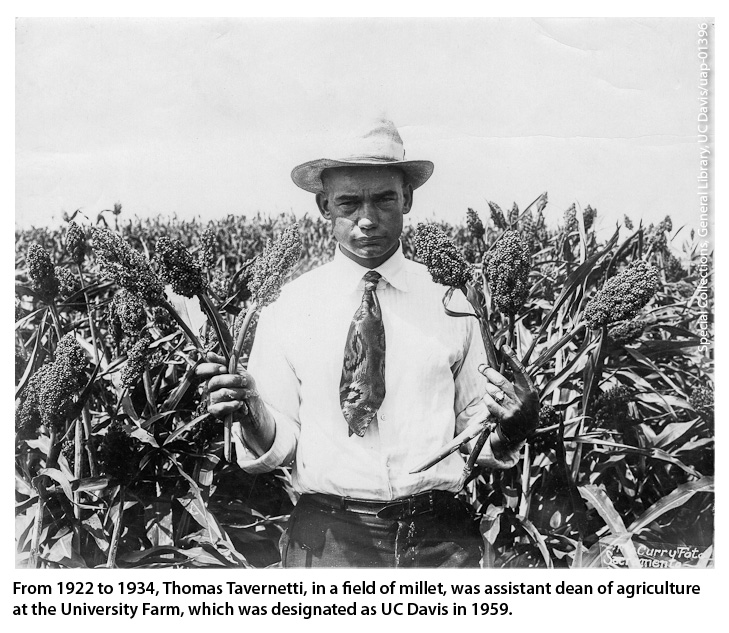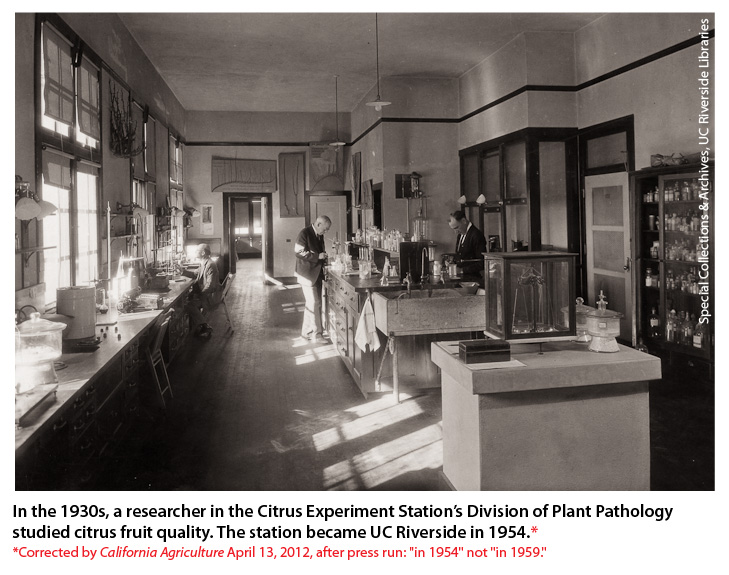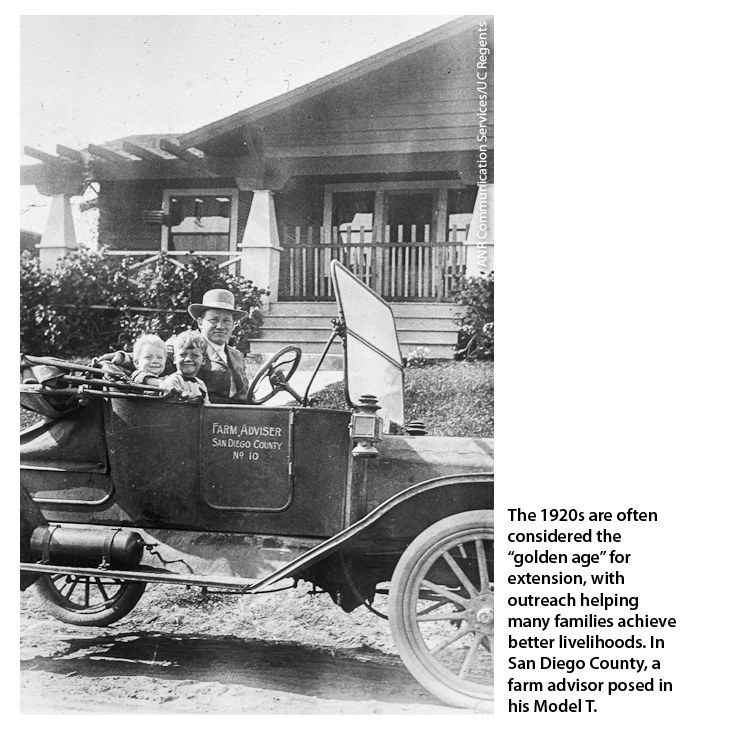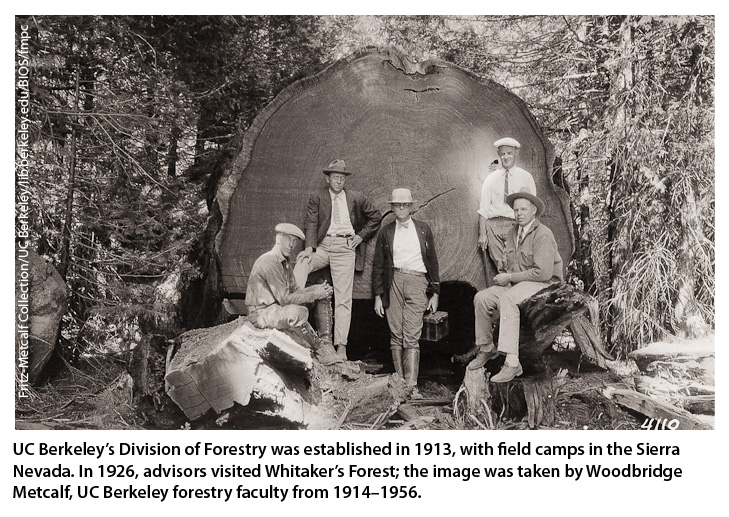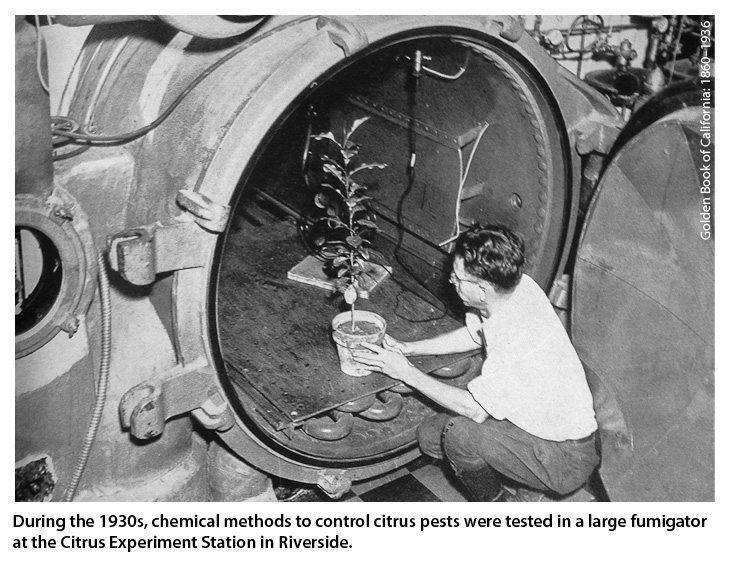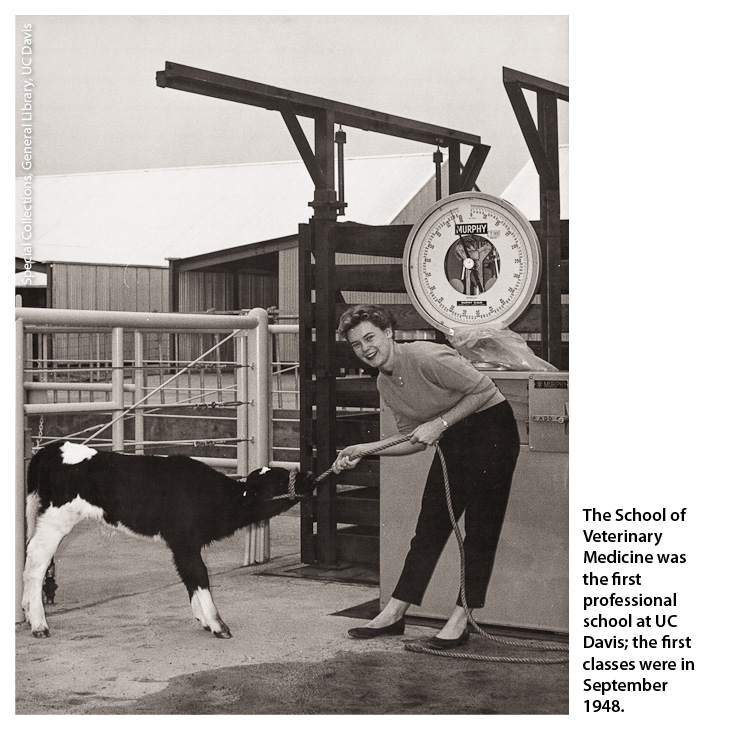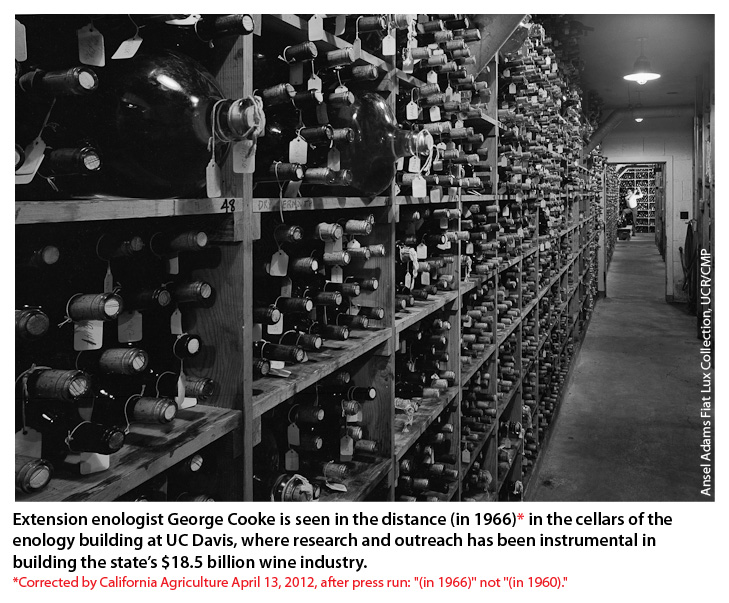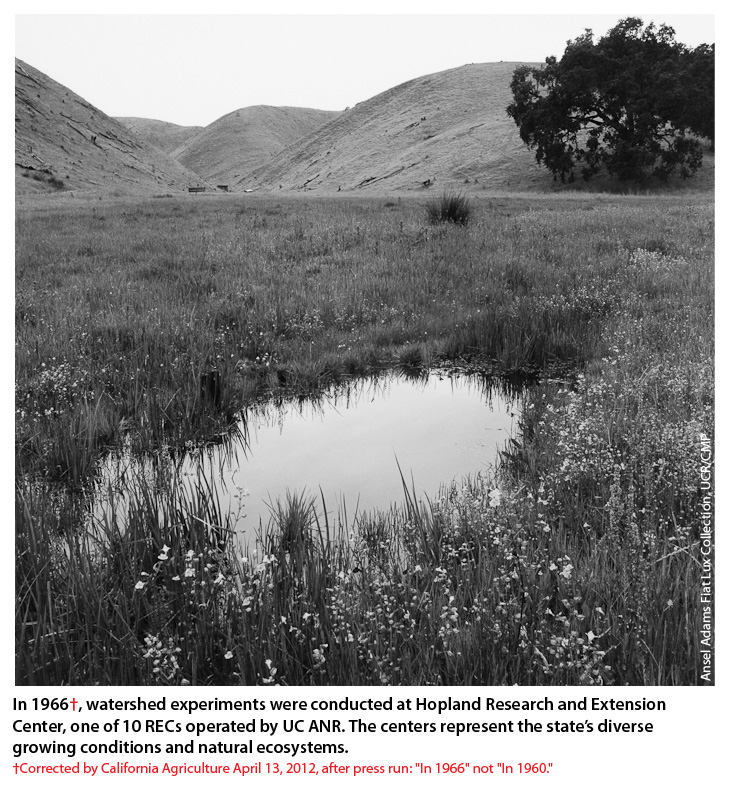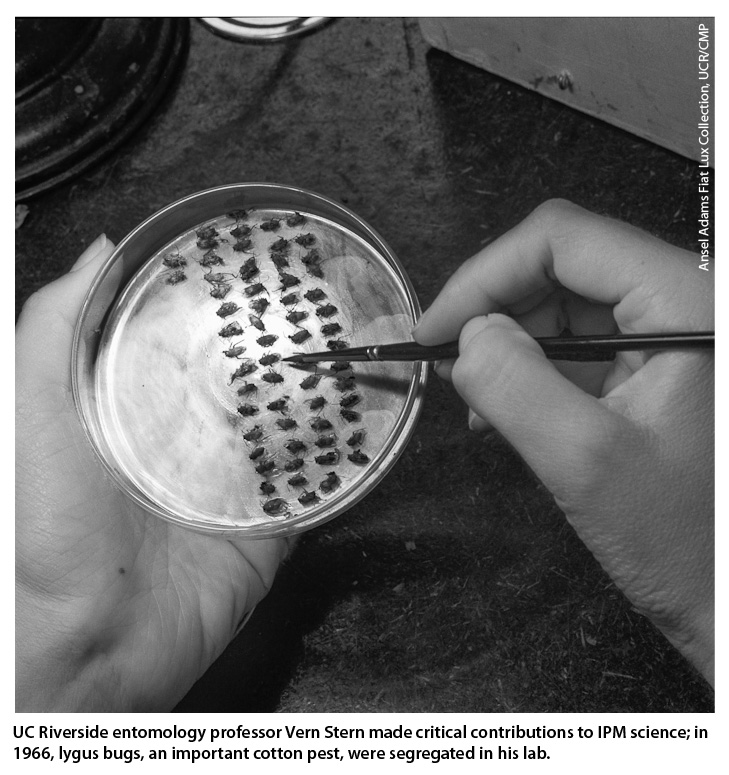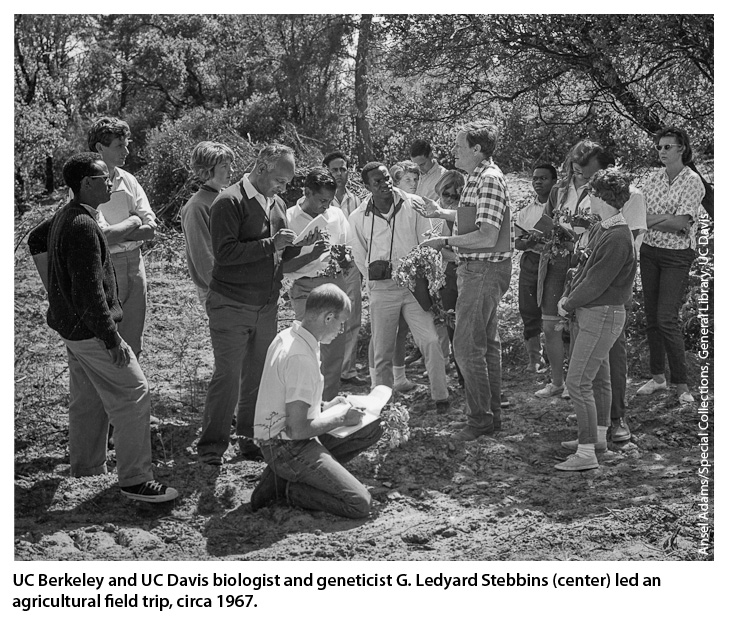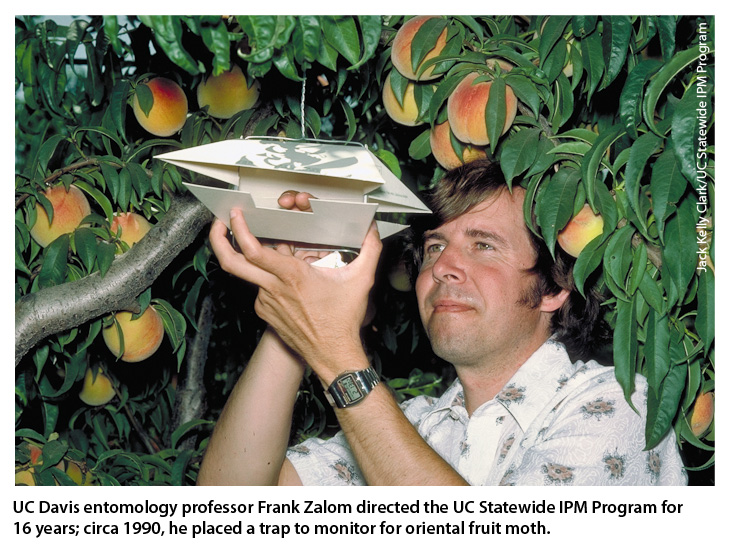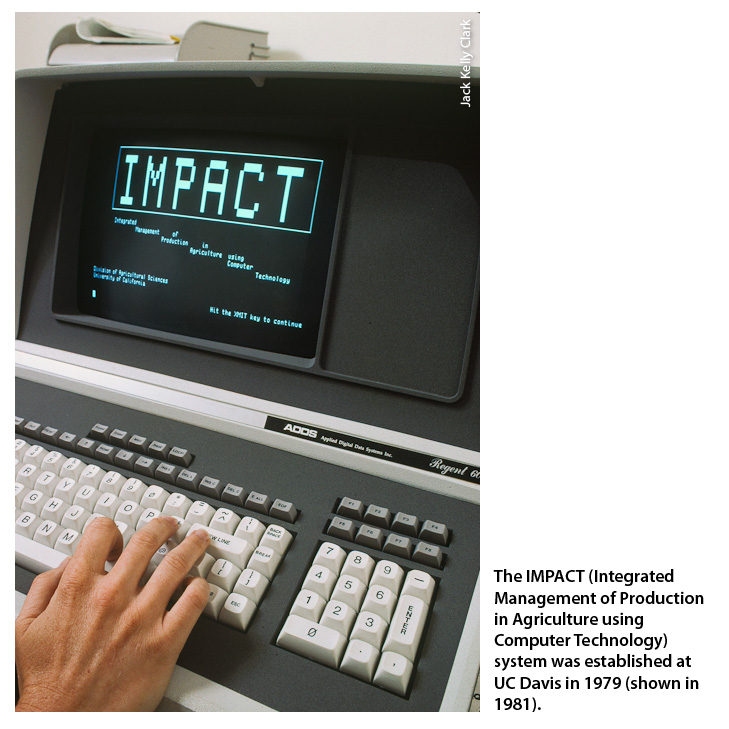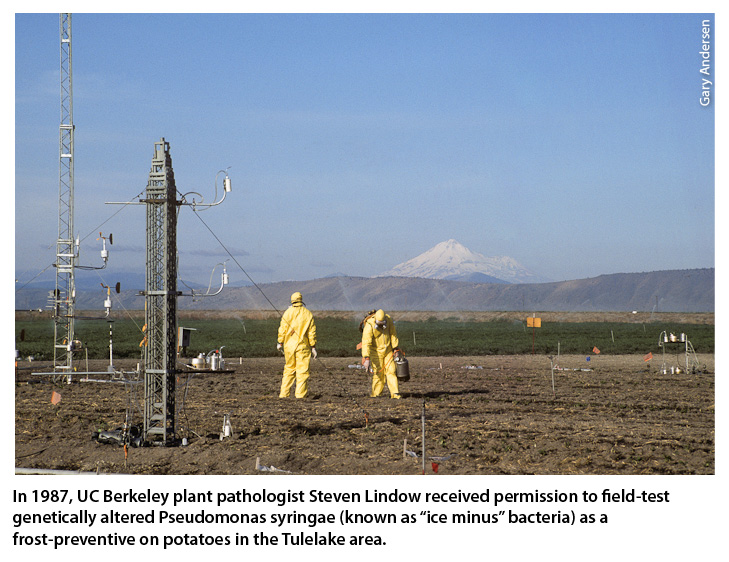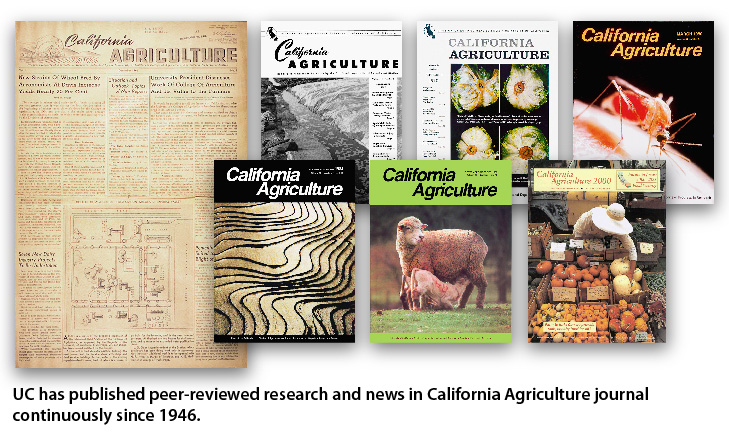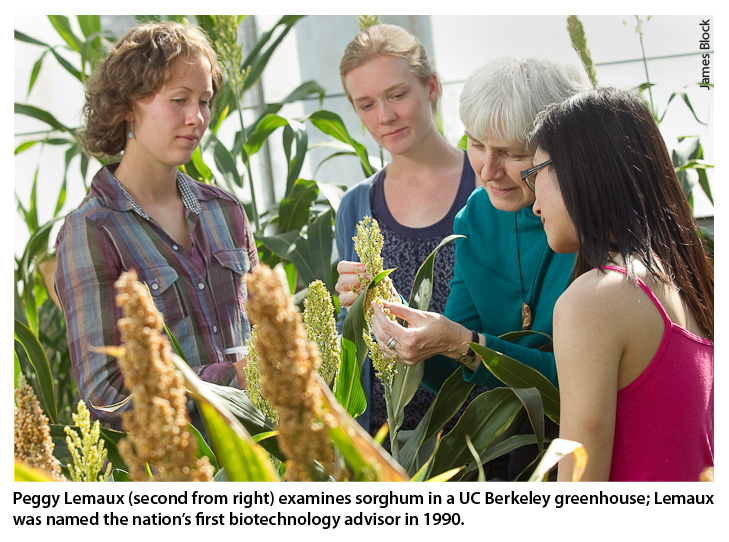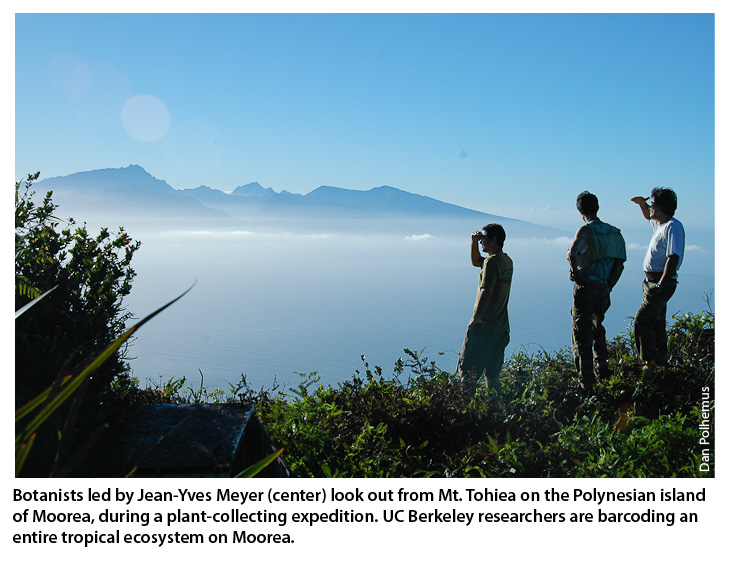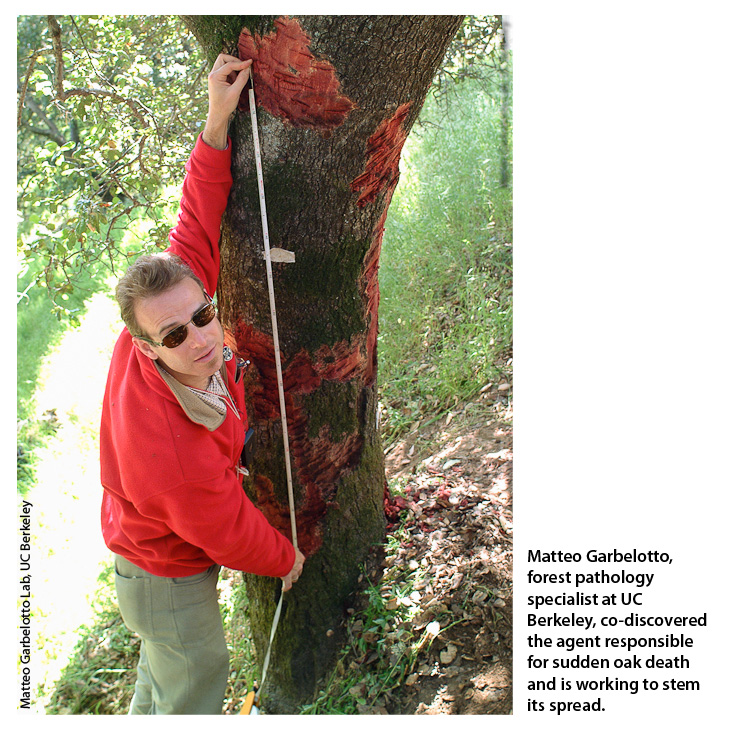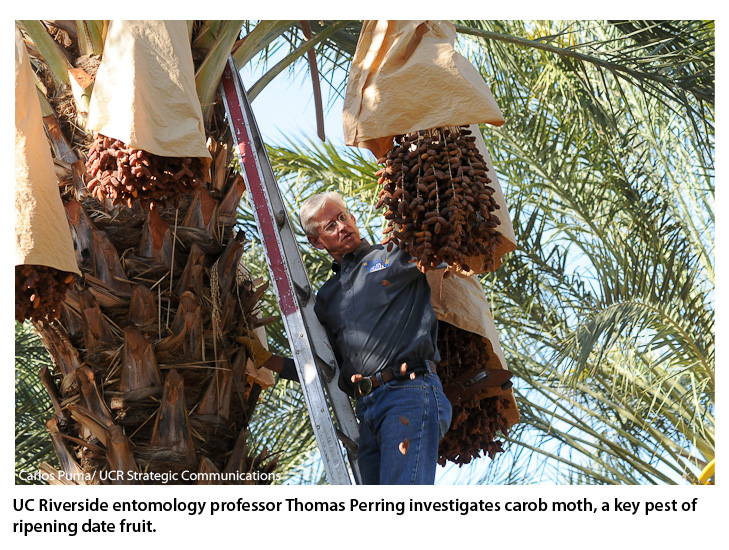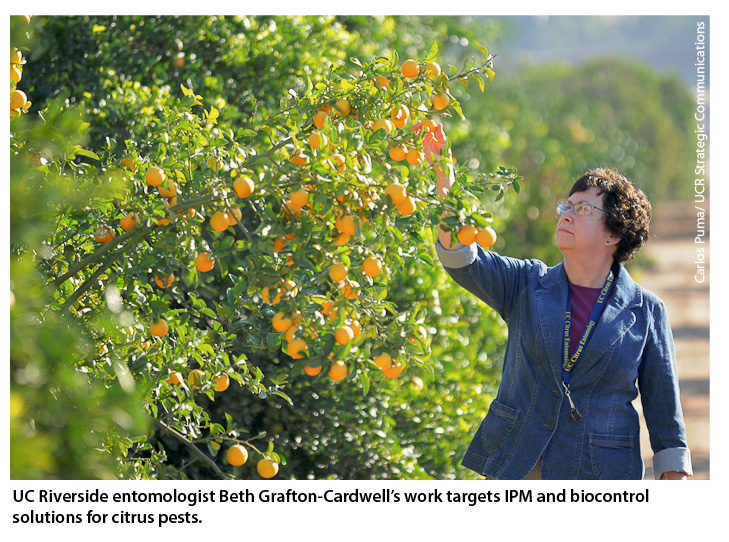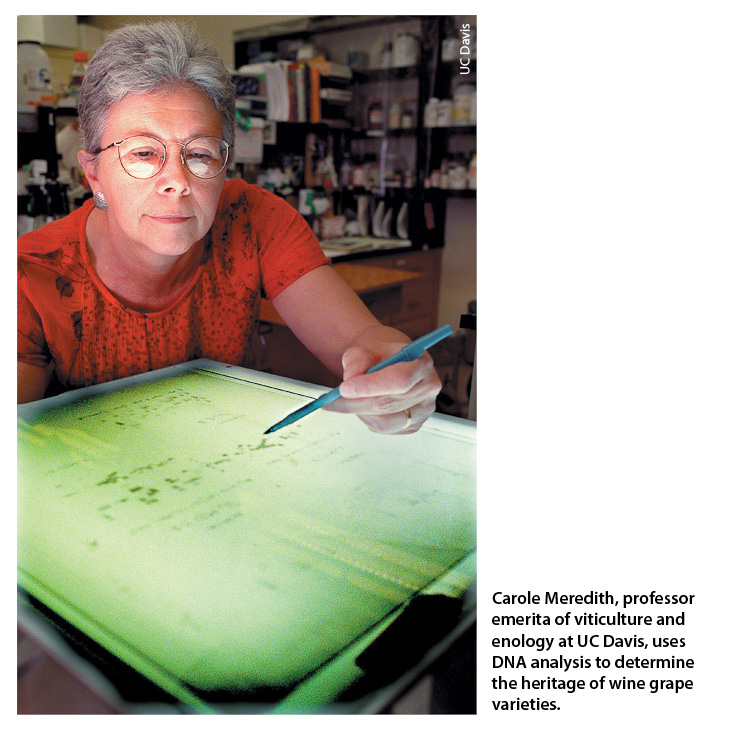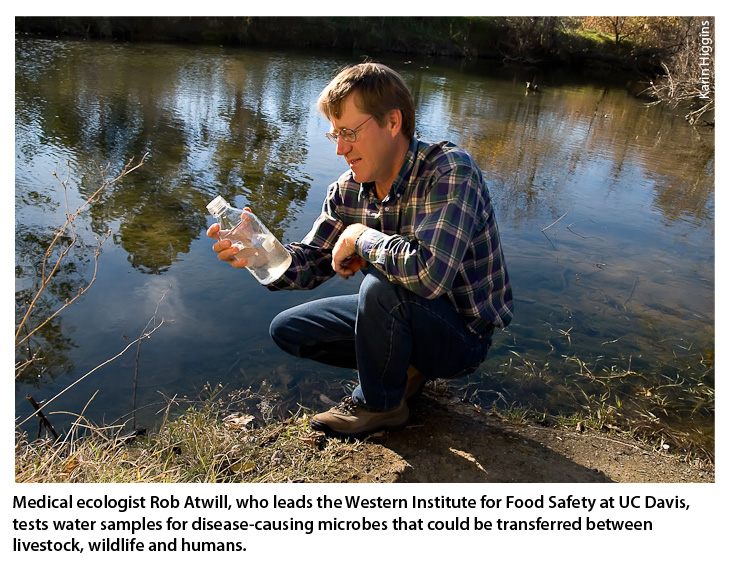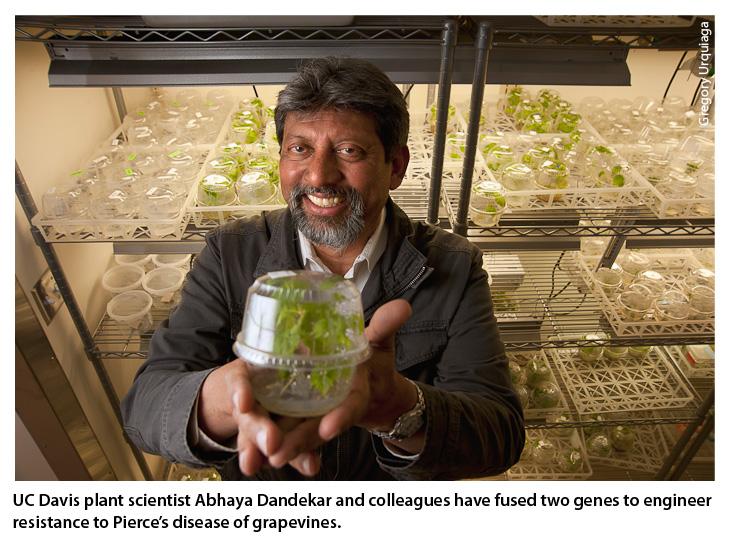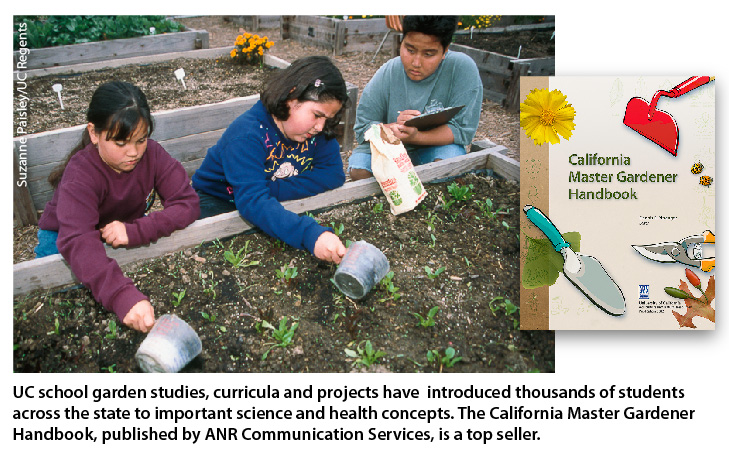All Issues
UC land grants: A photo history
Publication Information
California Agriculture 66(2):46-49.
Published online April 01, 2012
PDF | Citation | Permissions
Full text
Early days: 1862–1918
Among the first UC buildings was South Hall (left), first home of the College of Agriculture; it still stands on the UC Berkeley campus, just southwest of the Campanile. The 1873 image shows South and North Halls, looking west toward the San Francisco Bay.
A lecture classroom in South Hall, shown in 1898, was filled with students. The College of Agriculture was in the basement.
The University Farm was situated on 776 acres in Davisville, Yolo County — 75 miles north of Berkeley. Three buildings from this image, circa 1910, are still in use at UC Davis: North Hall, South Hall and the Cottage.
Since its inception in 1909, when the University Farm invited the community to view its new dairy barn, Picnic Day in Davis has grown into the largest student-run event in the nation. Shown is a cow parade, circa 1920.
From its earliest days, UC extended agricultural knowledge throughout California. In 1909, an agricultural demonstration train toured the state with animal husbandry displays.
After citrus growers, including John Henry Reed, lobbied for a research station, California established the Citrus Experiment Station in 1907 on 23 acres at the base of Mount Rubidoux, overlooking Riverside.
Research takes root: 1919–1945
A Picnic Day parade float at the University Farm in Davis featured a farm electrification demonstration, circa 1920.
From 1922 to 1934, Thomas Tavernetti, in a field of millet, was assistant dean of agriculture at the University Farm, which was designated as UC Davis in 1959.
At UC Berkeley, Ansel F. Hall constructed a relief model of Yosemite Valley in 1921. Hall went on to become the first park naturalist of Yosemite National Park.
In the 1930s, a researcher in the Citrus Experiment Station's Division of Plant Pathology studied citrus fruit quality. The station became UC Riverside in 1954.
The 1920s are often considered the “golden age” for extension, with outreach helping many families achieve better livelihoods. In San Diego County, a farm advisor posed in his Model T.
UC Berkeley's Division of Forestry was established in 1913, with field camps in the Sierra Nevada. In 1926, advisors visited Whitaker's Forest; the image was taken by Woodbridge Metcalf, UC Berkeley forestry faculty from 1914–1956.
During the 1930s, chemical methods to control citrus pests were tested in a large fumigator at the Citrus Experiment Station in Riverside.
Postwar years: 1946–2000
The School of Veterinary Medicine was the first professional school at UC Davis; the first classes were in September 1948.
Extension enologist George Cooke is seen in the distance (in 1966) in the cellars of the enology building at UC Davis, where research and outreach has been instrumental in building the state's $18.5 billion wine industry.
In 1966, watershed experiments were conducted at Hopland Research and Extension Center, one of 10 RECs operated by UC ANR. The centers represent the state's diverse growing conditions and natural ecosystems.
UC Riverside entomology professor Vern Stern made critical contributions to IPM science; in 1966, lygus bugs, an important cotton pest, were segregated in his lab.
UC Berkeley and UC Davis biologist and geneticist G. Ledyard Stebbins (center) led an agricultural field trip, circa 1967.
UC Davis entomology professor Frank Zalom directed the UC Statewide IPM Program for 16 years; circa 1990, he placed a trap to monitor for oriental fruit moth.
The IMPACT (Integrated Management of Production in Agriculture using Computer Technology) system was established at UC Davis in 1979 (shown in 1981).
In 1987, UC Berkeley plant pathologist Steven Lindow received permission to field-test genetically altered Pseudomonas syringae (known as “ice minus” bacteria) as a frost-preventive on potatoes in the Tulelake area.
UC has published peer-reviewed research and news in California Agriculture journal continuously since 1946.
Recent research highlights
Peggy Lemaux (second from right) examines sorghum in a UC Berkeley greenhouse; Lemaux was named the nation's first biotechnology advisor in 1990.
Botanists led by Jean-Yves Meyer (center) look out from Mt. Tohiea on the Polynesian island of Moorea, during a plant-collecting expedition. UC Berkeley researchers are barcoding an entire tropical ecosystem on Moorea.
Matteo Garbelotto, forest pathology specialist at UC Berkeley, co-discovered the agent responsible for sudden oak death and is working to stem its spread.
UC Riverside entomology professor Thomas Perring investigates carob moth, a key pest of ripening date fruit.
UC Riverside entomologist Beth Grafton-Cardwell's work targets IPM and biocontrol solutions for citrus pests.
Carole Meredith, professor emerita of viticulture and enology at UC Davis, uses DNA analysis to determine the heritage of wine grape varieties.
Medical ecologist Rob Atwill, who leads the Western Institute for Food Safety at UC Davis, tests water samples for disease-causing microbes that could be transferred between livestock, wildlife and humans.
UC Davis plant scientist Abhaya Dandekar and colleagues have fused two genes to engineer resistance to Pierce's disease of grapevines.



